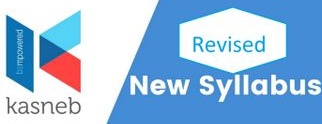COMMUNICATION AND CUSTOMER RELATIONS
UNIT DESCRIPTION
This paper is intended to equip the candidate with knowledge, skills and attitudes that will enable him/her to apply business communication, customer relations and personal skills required in the credit management field/profession.
LEARNING OUTCOMES
A candidate who passes this paper should be able to:
- Communicate effectively using a wide range of media in service delivery
- Apply personal skills to building customer relationships and negotiate effectively
- Prepare and conduct physical and online meetings
- Demonstrate ability to effectively work with teams
- Maintain customer relations through technology
- Uphold professional standards, ethics and values that credit staff need to exhibit within workplace
CONTENT
- Introduction to communication
1.1 Meaning of communication
1.2 Importance of communication
1.3 Elements of communication
1.4 The communication process
1.5 Principles of effective communication
1.6 Essential of an effective communication system
1.7 Methods of communication
1.8 Internal and external communication
1.9 Barriers to effective communication
1.10 Cross-cultural communication
- Written communication and visual communication
2.1 Sentence construction and paragraph development
2.2. Business correspondence
2.3 Reports and proposals
2.4 Memorandum
2.5 Posters and notices
2.6 Forms and questionnaires
2.7 Circulars and newsletters
2.8 Advertisements and publicity materials
2.9 Documents used in business transactions – letter of enquiry, catalogue, quotation, purchase order, invoice, credit note, debit note, others
2.10 E-mail
2.11 Visual communication – graphs/charts/tables/diagrams/pictures
- Oral communication
3.1 Meaning of oral communication
3.2 Importance of oral communication
3.3 Types of oral communication-face to face and telephone conversations
3.4 Effective listening
3.5 Interviews
3.6 Oral presentations and public speeches
3.7 Persuasive communication
3.8 Interpersonal relationships
3.9 Assertiveness
- Non-verbal communication
4.1 Meaning and importance of non-verbal communication
4.2 Forms of non-verbal communication
4.3 Effective use of non-verbal communication
4.4 Gender and nonverbal communication
4.5 Cultural impact on nonverbal communication
4.6 Barriers to effective non-verbal communication
4.7 Strategies for improving nonverbal communication
- Meetings
5.1 Purpose of meetings
5.2 Types of meetings
5.3 Planning for a meeting
5.4 Agenda and notice
5.5 Conduct of meetings
5.6 Role of chairperson, secretary and participants
5.7 Minutes
5.8 Conferences and symposia
5.9 Teleconferencing and video conferencing
- Groups and teams’ dynamics
6.1 Group development
6.2 Factor that determine the success of a group
6.3 Functions of groups in an organisation
6.4 Building effective teams
6.5 Team roles
6.6 Characteristics of effective teams
6.7 Group communication networks
6.8 Techniques for effective group discussion
6.9 Skills of an effective team player
6.10 Virtual groups- group e-mails, WhatsApp groups, social media, corporate blogs
6.11 Groupware
- Decision making and problem solving
7.1 Meaning of decision making
7.2 Meaning of problem solving
7.3 Types of decisions
7.4 The decision making process
7.5 Techniques of group decision making and problem solving
7.6 Advantages and disadvantages of group decision making
- Negotiation in customer relations
8.1 Meaning of negotiation
8.2 The negotiation process
8.3 Role of negotiation in customer relations
8.4 Principles of effective negotiation
8.5 Skills required for effective negotiation
8.6 Success of a negotiation process
8.7 Making concessions
8.8 Approaches to negotiation
8.9 Barriers to effective negotiation
8.10 Negotiating with debtors
- Customers’ feedback
9.1 Meaning of customer feedback
9.2 Importance of customer feedback
9.3 Methods of obtaining customer feedback
9.4 Principles of effective complaints handling
9.5 Procedure for handling customer feedback and complaints
9.6 Skills for effective complaints handling
9.7 Listening to customers
9.8 Dealing with difficult customers
- Customer relations
10.1 Definition and importance of a customer
10.2 Changing customer behavior and expectations
10.3 Customer perception
10.4 Customer attraction and retention strategies
10.5 Meaning and importance of customer relations
10.6 Relationship marketing
10.7 Principles of good customer relations
10.8 Techniques of building long lasting customer relationships
10.9 Monitoring and measuring customer satisfaction and loyalty
- Customer care through technology
11.1 Definition of customer care
11.2 Role of customer care in customer relations
11.3 Employees’ role in customer care
11.4 Role of technology in customer care
11.5 Call centers and help desks
11.6 Customer care through internet-based and mobile technologies
11.7 Technology etiquette and strategies
11.8 The telephone in customer care
11.9 Social media
- Ethics in customer relations
12.1 Ethics in customer relations
12.2 Role of ethics in customer relations
12.3 Applying ethics in customer relations
12.4 Professional standards for credit staff
12.5 Ethical dilemma in customer relations
12.6 Overcoming ethical dilemma in customer relations
